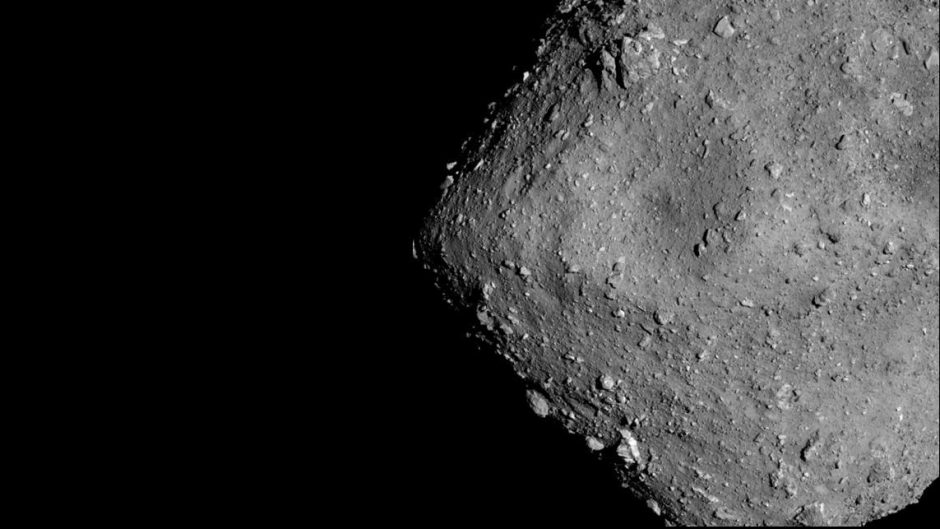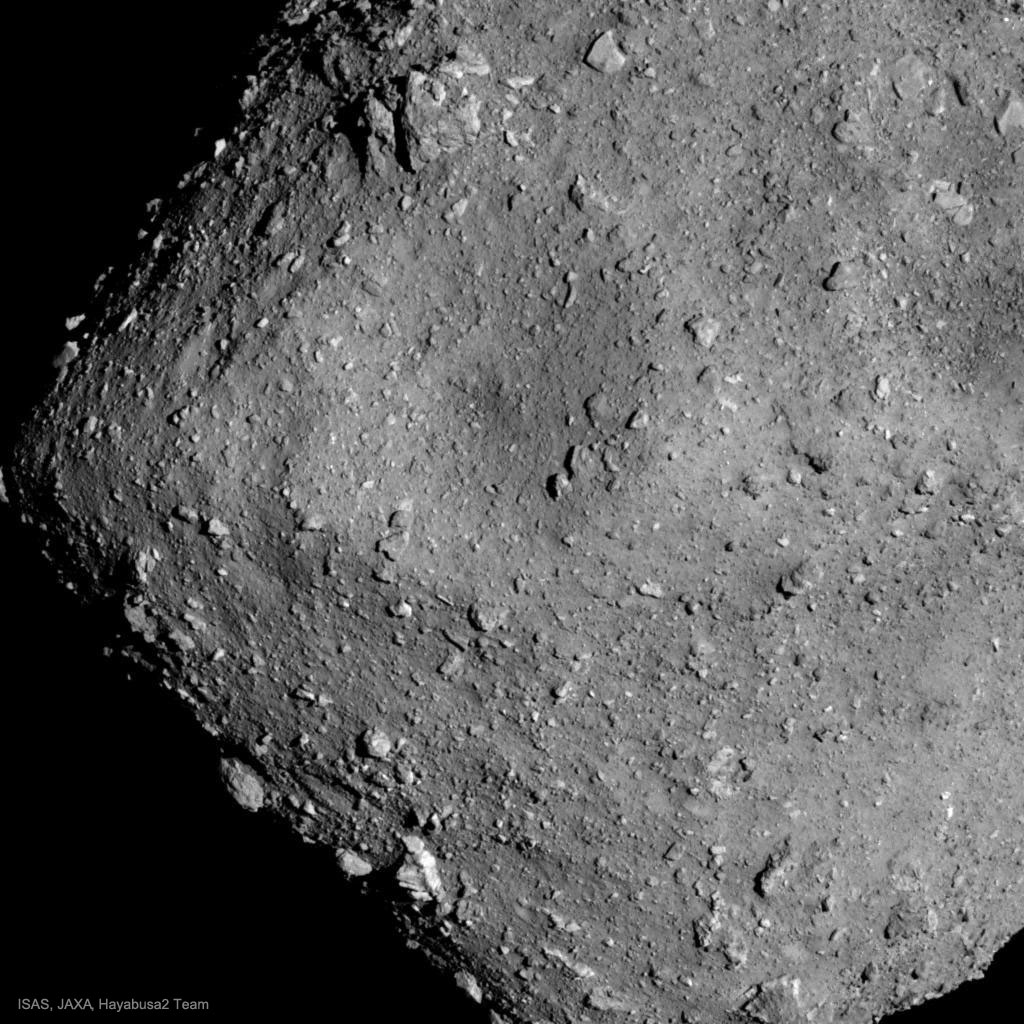Asteroid samples reveal early Solar System history

Nearly two years ago, the Hayabusa2 space probe returned samples from the asteroid Ryugu to Earth. Since then, international research teams – including members of ETH Zurich and the National Centre of Competence in Research (NCCR) PlanetS – have worked on analysing the valuable cargo. The results allow the scientists not only to reconstruct the history of Ryugu but also to shed light on the early development of the Solar System.

Asteroid Ryugu. Image Credit: ISAS, JAXA
Throughout its history, Earth has constantly evolved. Plate tectonics, changing climates and living organisms allowed few of the characteristics from its early stages remain to this day. This had made it difficult for researchers to learn about this crucial period, in which not only Earth but also the Solar System formed.
Other cosmic bodies, like for example many asteroids, have changed much less during their history. This makes them far better sources of information for the early periods of the Solar System.
In 2019, the Hayabusa2 mission of the Japan Aerospace Exploration Agency (JAXA) probed one such asteroid: Ryugu, a near-Earth asteroid with an approximate diameter of 900 metres. The collected material samples safely landed on Earth about a year later.
Since then, international research teams, including members of ETH Zurich and the National Centre of Competence in Research (NCCR) PlanetS, have worked on analysing the valuable cargo. Some of their results were recently published in the scientific journals Science, Science Advances and Astrophysical Journal Letters.
A window to the distant past

ETH Professor and NCCR PlanetS member Henner Busemann. Image: PlanetS
“Original meteorites – asteroids that have crashed onto the surface of Earth – have already taught us much about the very early conditions of our Solar System”, ETH Professor and NCCR PlanetS member Henner Busemann explains. So far, however, this knowledge gain was mostly complicated by contamination of the asteroid material by the air, water and surface of Earth. “In the case of the Habyabusa2 samples, however, we know that the material was in an airtight container. We can therefore be certain that it actually provides us with detailed information about the conditions of the early Solar System – an invaluable treasure box”, Busemann says.
By analysing the material’s composition with mass and infrared spectrometers, the researchers were able to confirm that Ryugu is a so-called carbonaceous chondrite asteroid. “This is some of the oldest material we know from the Solar System and it largely has the same elemental composition as the Sun”, Busemann says. Ryugu even turned out to contain so-called presolar grains. “These are particles of dust from the molecular cloud from which the Sun and its planets formed – including Earth.”
Together, these findings give the researchers excellent insights into the conditions in which the Solar System began its evolution.
A long migration

ETH Professor and NCCR PlanetS member Maria Schönbächler. Image: (SPACE/UNIBE/Alessandro Della Bella)
“The samples of Ryugu also tell us the story of a journey. Like many other objects in the Solar Sytem, Ryugu formed further away from the Sun than its current location”, ETH Professor and NCCR PlanetS member Maria Schönbächler says. The researchers came to this conclusion by measuring the content of volatile elements in the samples. “Volatile elements and compounds, like nitrogen or water, easily evaporate away from small planetary bodies when they are heated. Since Ryugu is rich in these elements, it must have formed quite far away from the Sun – potentially even as far as the formation region of ice giant planets Uranus and Neptune”, Schönbächler says. “Instability in the Solar System, caused by the growth and migration of the giant gas planets Jupiter and Saturn, then likely propelled the asteroid towards the asteroid belt, where it remained for billions of years.”
From there, however, the journey would continue.
“Based on measuring the impact of cosmic rays on Ryugu’s surface, we believe that that a collision broke off the part that we call Ryugu from its “mother-asteroid”about five million years ago. This diverted Ryugu into the inner region of the Solar System, closer to Earth, which now allowed us to sample it”, Schönbächler says.
Many other asteroids – or planetary building blocks – may have undertaken similar journeys from the outer regions of the young Solar System towards the center.
Iron and water
By measuring the composition of Iron isotopes of Ryugu – something that Schönbächler compares to an organisms DNA or fingerprint – the researchers determined that it is actually quite similar to the composition of Earth’s Iron isotopes. “This tells us that rather large quantities of material from the outer Solar System regions must have been incorporated into the growing Earth”, Schönbächler says. “And since such material also contains substantial amounts of volatile components – including water – it is possible that Earth received at least some of its water from bodies like Ryugu.”
“Overall I’d say that the Hayabusa2 sample return was a great success”, Henner Busemann sums up. “We were able to obtain a wealth of valuable results from the pristine asteroid material, and there are more results to come. I am excited to learn more.”
Links to related publications:
Noble gases and nitrogen in samples of asteroid Ryugu record its volatile sources and recent surface evolution | Science
Presolar Stardust in Asteroid Ryugu – IOPscience
First asteroid gas sample delivered by the Hayabusa2 mission: A treasure box from Ryugu | Science Advances
Ryugu’s nucleosynthetic heritage from the outskirts of the Solar System | Science Advances
Categories: News

